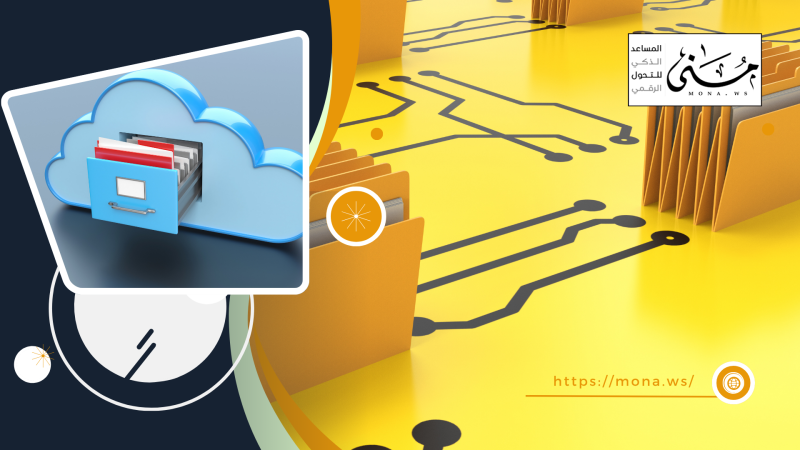Have you ever wondered how many critical institutional decisions get lost or executed incorrectly simply because an internal message didn't arrive on time—or wasn’t properly documented?
In a world where organizations move at the speed of light, internal correspondence has become the lifeblood of effective management. Yet without clear digital governance policies, these messages can turn into sources of confusion, disorganization, and missed opportunities. That’s why institutions need smart systems that realign the flow of correspondence, link messages to their administrative context, and ensure full compliance and transparency.
In this article, we explore how digital governance transforms internal correspondence from disarray to accountability—and how solutions like DocSuite can make a real, measurable difference.
The Reality of Internal Correspondence in the Absence of Governance
Many organizations face recurring challenges in managing internal correspondence—ranging from lost paper memos to conflicting authority or decisions executed out of context. When there’s no clear governance policy, messages become disconnected fragments that can't be tracked, referenced, or verified within the administrative decision chain.
This results in:
-
Administrative chaos: Important messages may be ignored or delayed due to lack of notifications or tracking.
-
Weak accountability: It's difficult to determine who is responsible for an action, or whether a directive was executed as intended.
-
Duplicated efforts and role confusion: Without linking messages to official tasks, multiple employees may be assigned the same job—or the wrong person may act without proper authorization.
These challenges hinder operational efficiency and highlight the urgent need for a digital framework to organize, document, and integrate messages into the institutional structure. This is where the journey to digital governance begins.
Digital Governance: A Strategic Response to Communication Chaos
Digital governance is more than adopting software—it’s a comprehensive administrative approach that uses technology to control processes, foster transparency, and ensure internal compliance. When applied to internal correspondence, it turns communication from simple message exchange into a documented, interactive system aligned with organizational roles and workflows.
Here’s how digital governance makes a fundamental difference:
Linking Messages to Administrative Context
In a digitally governed environment, internal messages are not isolated documents—they are tied to specific workflows. For instance, a finance manager's request to the procurement department for a price quote is automatically linked to a project or operational task. The message becomes a traceable part of a goal-oriented action plan.
This connection not only boosts efficiency but also gives management a clear view of each action’s background and its place within the broader operation—enhancing interdepartmental coordination and reducing errors.Clearly Defining Permissions
One of the major flaws in traditional systems is “authorization ambiguity.” Unauthorized staff might access confidential messages, or someone unqualified may respond to a sensitive matter. Digital governance solves this at the root by linking each message to predefined role-based permissions.
In systems like DocSuite, users are assigned specific rights—viewing, responding, executing, or closing messages—based on organizational hierarchy. This increases security and reduces errors caused by unauthorized interference.
Enhancing Transparency and Accountability
Every interaction within a digitally governed system is automatically logged: who read the message, when, what actions were taken, and whether deadlines were met. This "audit trail" can be reviewed at any time.
Such documentation is not only useful for audits—it fosters a culture of responsibility. Employees know that every action is recorded, managers can monitor performance, and internal/external auditors can easily review administrative workflows.
Centralized Archiving with Fast Retrieval
One of the most painful flaws in paper-based or ad hoc systems is the loss of messages or the difficulty in finding them. With governed digital archiving, all messages are stored in a secure central repository, categorized by topic, sender, date, confidentiality level, or keywords.
Search takes seconds, and access is granted based on user permissions. This not only boosts productivity but builds a lasting institutional memory that supports strategic decision-making.
DocSuite: From Messages to Full Operational Management
While many organizations seek tools to implement digital governance in internal communication, DocSuite stands out as a smart, practical solution. It doesn’t just manage messages—it organically integrates them into the organization’s entire operational system. Instead of isolated communication, correspondence becomes part of a connected, end-to-end framework handling everything from daily requests to HR, inventory, and scheduling.
Here’s how DocSuite achieves this level of integration:
Linking Correspondence to Real Tasks and Operations
Every message in DocSuite is not just stored—it is actively connected to:
-
Work Order Management: A maintenance request from management becomes a live, trackable work order until resolved.
-
Spare Parts Inventory Management: Messages requesting materials are linked to the inventory system to check availability and issue dispatch orders.
-
Asset Management: Maintenance-related correspondence is attached to asset history, providing a comprehensive operational record.
-
Preventive Maintenance: Recurring messages are converted into scheduled maintenance plans to prevent downtime and extend asset life.
Reinforcing Safety and Compliance
Thanks to built-in governance, all messages related to safety procedures or compliance guidelines are registered and linked to specific actions. This helps institutions prove full adherence during inspections, backed by a digital, timestamped record.
From Messages to Insights: Actionable Reports & Analytics
DocSuite turns correspondence into strategic data. Through its reporting module, you can generate stats on:
-
Message volume by department.
-
Response and delay rates.
-
Closed vs. pending messages.
-
Internal communication performance indicators.
These reports empower better decisions and continuous process improvement.
Running Operations Fully Online
DocSuite’s integration with correspondence enables users to execute full operations online:
-
Service Request Management with internal tracking.
-
Remote Work Enablement through web-based dashboards.
-
Supplier Management with contract and procurement message tracking.
-
Attendance and Time Tracking with auto notifications.
-
Payroll Integration by linking requests and approvals to financial workflows.
HR and Recruitment Integration
Employee-related correspondence doesn’t get lost. With DocSuite, messages connect directly to:
-
Employee Self-Service Portals for requests and responses.
-
Talent and Performance Management, including notes, alerts, and evaluations.
-
Recruitment Portals, transforming interview feedback into automated HR processes.
-
Applicant Tracking System (DocSuite ATS).
-
Onboarding and Offboarding Procedures, with structured communication, alerts, and closure steps.
Scheduling and Meeting Integration
Meetings are no longer managed via scattered emails. DocSuite handles:
-
Calendar invites and scheduling.
-
Agenda distribution.
-
Linking meetings to related correspondence or tasks.
-
Post-meeting report generation automatically.
Electronic Signatures and Formal Approval Tracking
One of DocSuite’s strongest features is the ability to digitally sign internal messages with legal validity. No need for printing—this speeds up decisions, enforces control, and secures official documentation.
Conclusion: Governance Starts with Messaging—and Transforms the Organization
Internal correspondence is no longer a passive stream of notes; it’s the foundation of institutional accountability, decision-making, and operational integrity. Without digital governance, message handling becomes chaotic—costing the organization time, resources, and trust.
With integrated platforms like DocSuite, it's now possible to move from fragmentation to structure, from paper trails to smart ecosystems—where every message is treated as a formal record, embedded in an administrative context.
Applying digital governance to internal correspondence doesn’t just ensure transparency and compliance—it marks a transformation in how the organization operates, paving the way for a more agile, efficient, and sustainable institution in the digital age.
Start with the message—and transform your entire system.









Comments
Add New Comment